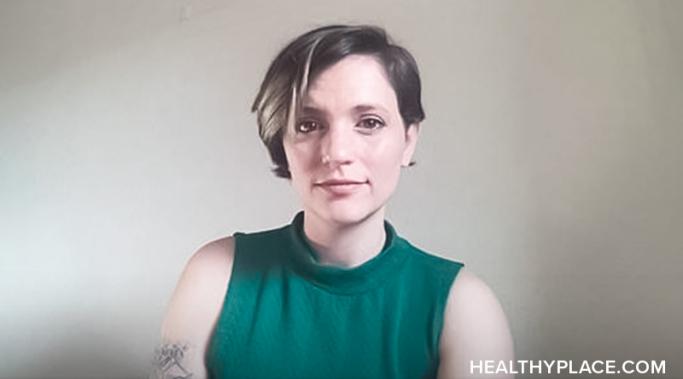Living with the intensity of borderline personality disorder (BPD) feelings used to make me feel crazy. I could feel so sure someone was going to leave me, only to find out later there was nothing to worry about. For most of my life, I struggled to control my painful and embarrassing emotions. It wasn't until I started accepting my perception as truth that I began to feel more in control.
More than Borderline
Learning to validate yourself is a powerful tool, especially for those of us with the ever-intense borderline personality disorder (BPD) emotions. I knew that the temptation to engage in maladaptive behaviors would still exist on my road to recovery. I did not, however, expect the extent to which I would learn to invalidate and essentially gaslight myself.
This article discusses splitting in borderline personality disorder (BPD). (This is also known as black-and-white thinking.) For me, splitting leads to paranoid thoughts, which are usually based on something to do with abandonment. When I become aware that I may not be seeing reality clearly, I start dissociating. Then, I get into a space where I don’t feel like I exist. That’s the bit I’d like to get into in this article: how splitting leads to dissociation and how I overcome it.
Did you know that neurodiversity includes borderline personality disorder (BPD)? Most people associate the term with autism or attention-deficit/hyperactivity disorder (ADHD). But, the scope of neurodiversity is much larger than that. The term is new in the mental health community and evolving quickly. However, while information on it is plentiful in the ADHD and autism world, there is surprisingly little information on neurodivergence concerning BPD. So, how does neurodivergence manifest in BPD?
Shame and borderline personality disorder (BPD) have gone hand in hand throughout my life. It contributed to the manifestation of almost every symptom, but I saw it most concerning identity and sense of self. Here, I talk about how shame and identity relate to each other in my experience living with BPD.
Mental health labels and humans go together like unicorns and glitter. Some see the union as innocent and natural. Others see a mystical creature that doesn’t exist and tiny pieces of plastic headed for the ocean. Labels can free you, and they can chain you.
My name is Desiree Brown, I live with borderline personality disorder (BPD), and I am the new author of "More than Borderline" here at HealthyPlace. The first time I tasted those words, they disgusted me. Was I supposed to be in order? Would that then make me out of order? Like a common public toilet?
I've been writing for the "More than Borderline" blog for around a year now. The experience has been both rewarding and challenging. These are my final reflections on borderline personality disorder (BPD) and advocacy.
When meeting new people, I can become obsessive about looking for approval. Due to living with borderline personality disorder (BPD), I often feel separate from others and like my sense of self is undefined. Therefore, I sometimes change my external personality traits to better connect with other people and feel accepted.
I just celebrated my first marriage anniversary. When I was younger, my borderline personality disorder (BPD) symptoms were so intense that I struggled to maintain long-term, healthy relationships. However, I have adopted some strategies to keep my marriage and myself healthy.









